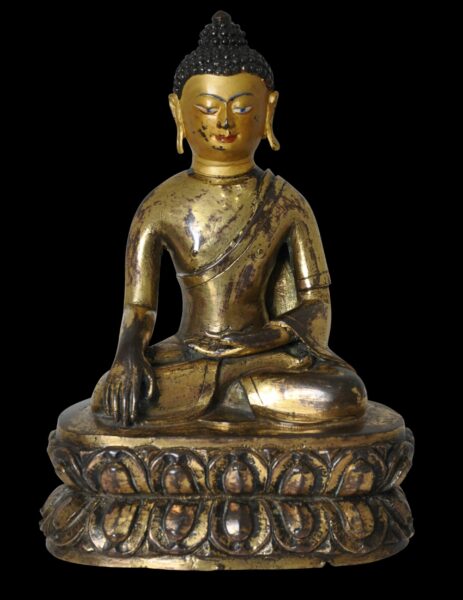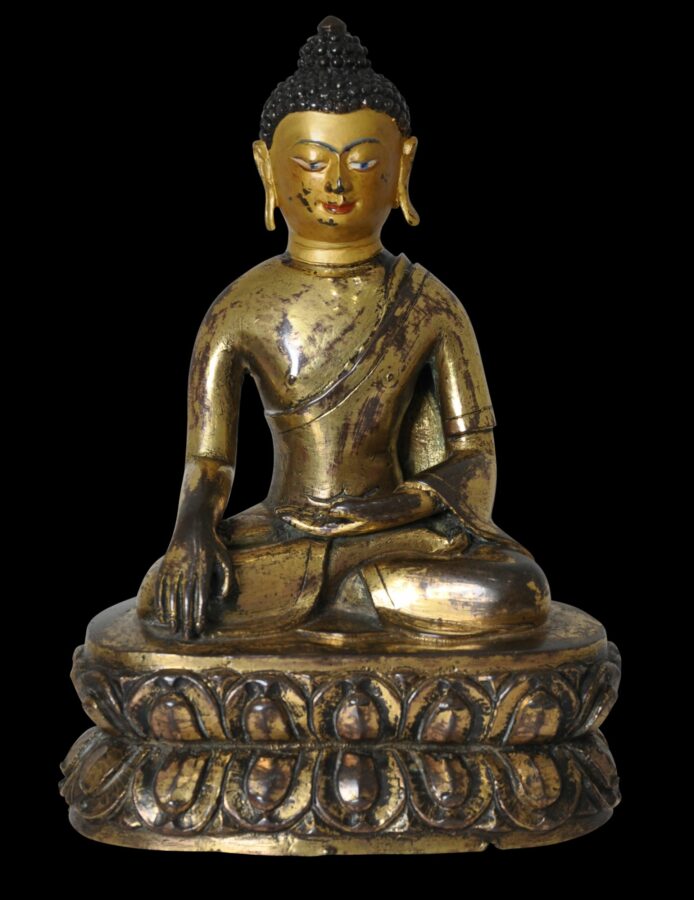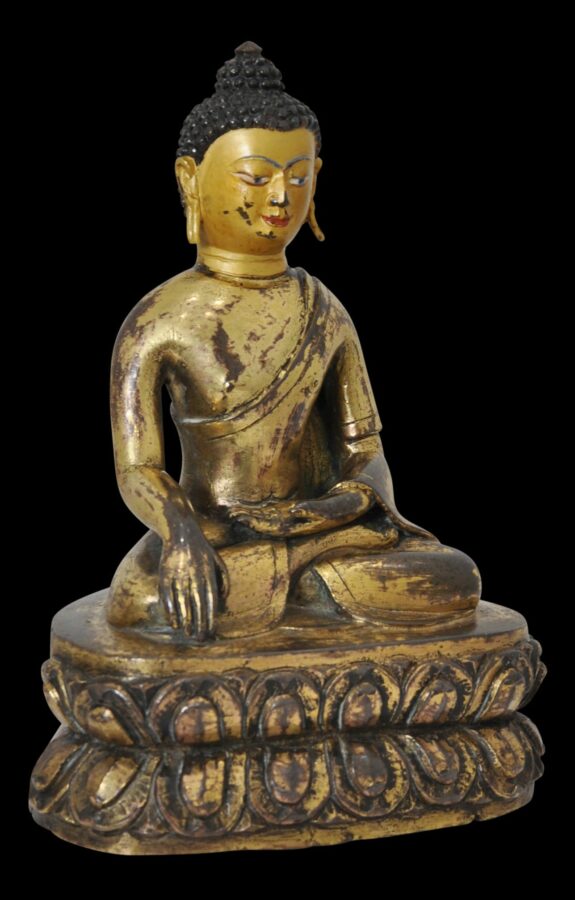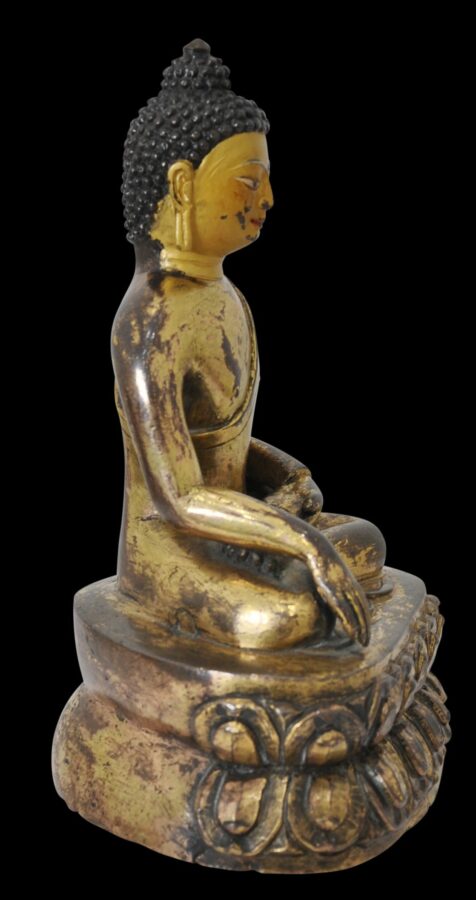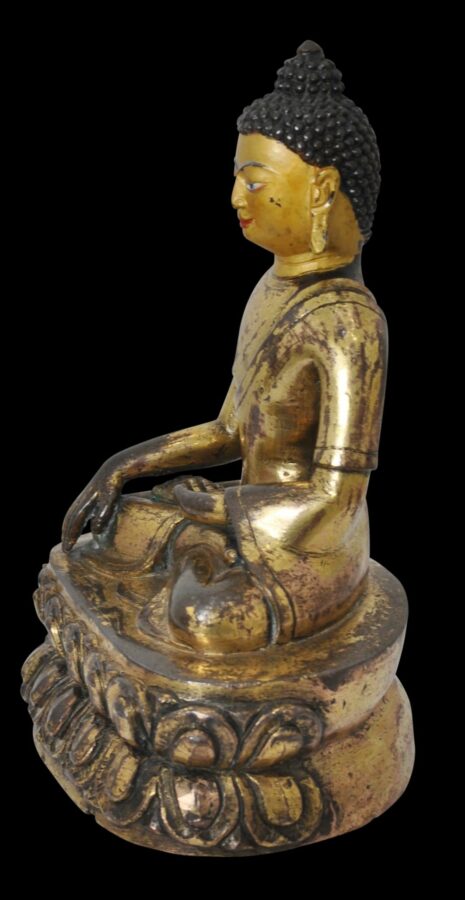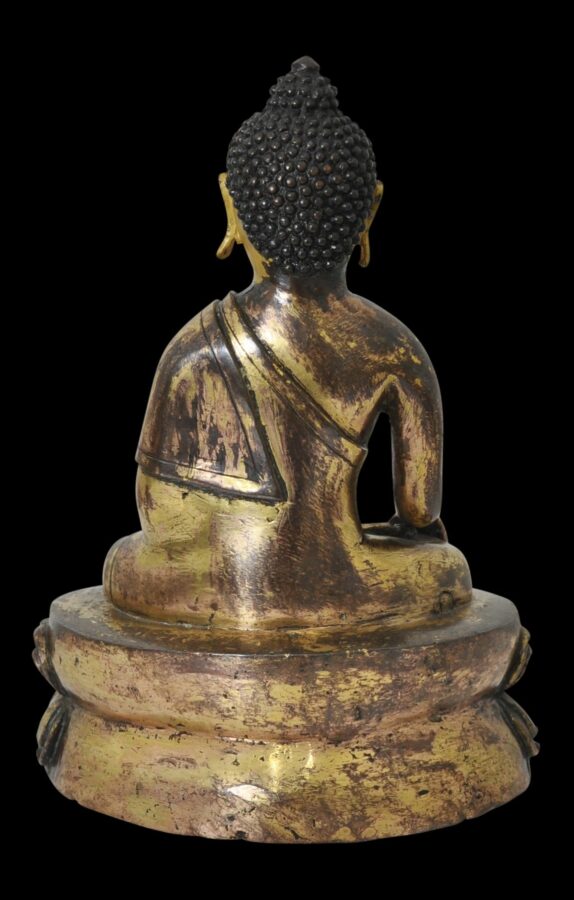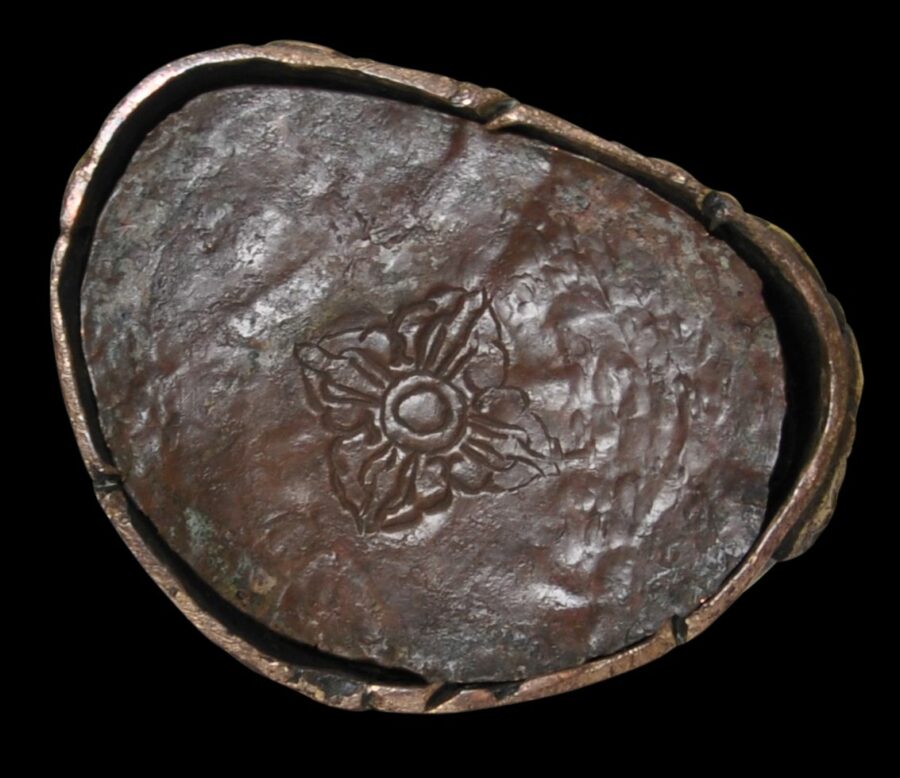This fine image of the Buddha dates to the 17th century (and possibly the early 18th century). It is in a form commonly known as the Sakyamuni Buddha.
The Buddha sits cross-legged on a high, double lotus throne. The ample, pleated robes are gilded. The Buddha’s face retains its original cold-painted decoration, rendered in naturalistic colourings.
The Buddha’s right hand gestures downward in the earth-touching gesture (bhumisparsha mudra) with which he calls the earth as his witness to affirm that he is entitled to attain enlightenment following his triumph over Mara, the destroyer.
A similar example is illustrated in Musee National D’Histoire Naturelle (1987, pl. 106).
The image has a consecration plate but it appears to have been opened and may be a replacement, although it is apparent that consecration items remain inside. The plate is engraved with a central, double vajra motif.
The name Sakyamuni (or Shakyamuni) is a rendering of the Sanskrit for ‘sage of the Sakya). The Buddha or Siddhartha Gautama, to give him his actual name, was a prince of the Sakya clan, which is believed to have a founded a small city-state called Kapilavatthu, near Lumbini, in what is now Nepal, about 700 BC.
The image here is in fine condition. It is large, and has pleasing wear to the gilding, which has developed a soft hue with time. The colourings on the face are largely intact which is consistent with the face not having been handled, the face and head having been treated with particular reverence.
References
Musee National D’Histoire Naturelle, Tresors du Tibet, Editions du Museum, 1987.


